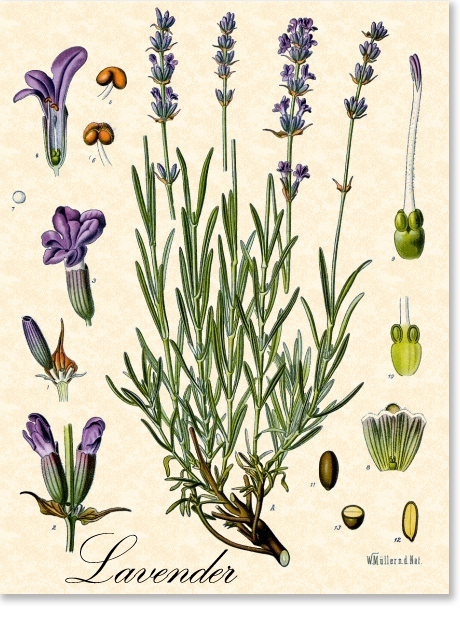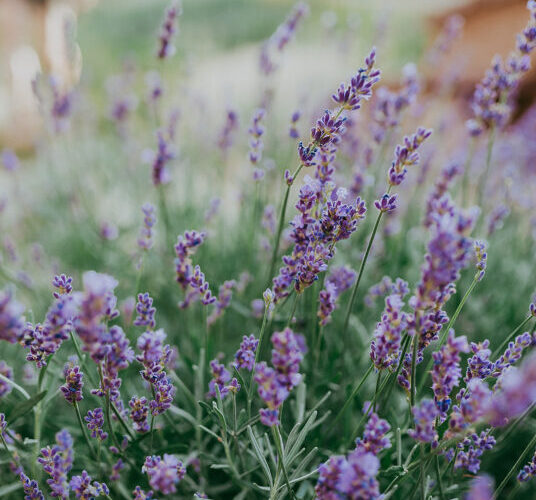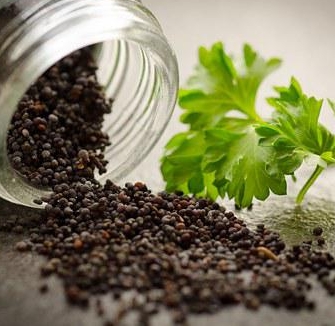A Beloved Bloom for Body, Mind, and Spirit
If ever there were a plant that seems to sing its own soft lullaby, it would be lavender.
With its delicate purple spires and signature scent—fresh, floral, and gently sweet—lavender (Lavandula angustifolia) is one of the most beloved herbs across cultures and generations. It carries a soft strength, offering calm to the anxious heart, clarity to the restless mind, and ease to the weary body. Whether bundled in linen sachets, steeped into tea, or diffused through the air, lavender reminds us to exhale, soften, and return to stillness.
Traditionally, lavender has long been revered not just for its beauty and fragrance, but for its potent medicinal virtues. Ancient Greeks and Romans bathed in lavender-scented water, while medieval herbalists turned to it to ease headaches, repel pests, and purify the air during plagues. During World War I and II, lavender oil was used in hospitals as an antiseptic wound dressing—its antibacterial and analgesic properties offering both comfort and protection.
In modern herbalism, lavender remains an indispensable ally for the nervous system. The essential oil is widely recognized for its ability to ease anxiety, reduce agitation, and promote restful sleep. In fact, numerous clinical studies have confirmed its efficacy in managing generalized anxiety and mild depression, often rivaling pharmaceutical interventions without the same side effects.
This herb works in a beautifully multidimensional way: calming tension, uplifting the spirit, and soothing the physical body. It is often used for insomnia, digestive upset linked to stress, menstrual discomfort, and tension headaches. Lavender’s cooling, relaxing nature makes it a go-to remedy for both acute and chronic stress conditions—especially when overwork, burnout, or emotional strain are at play.
And it’s not just for internal use. Lavender makes an exquisite skin ally. Its antimicrobial, anti-inflammatory, and wound-healing properties make it useful in salves and compresses for minor burns, cuts, bug bites, and acne. A few drops of the essential oil diluted in a carrier oil can offer relief from tension when massaged onto the temples or the soles of the feet.

MATERIA MEDICA: LAVENDER
Latin Name: Lavandula angustifolia
Family: Lamiaceae (Mint family)
Part Used: Flower
Energetics: Cooling, bitter, slightly pungent, aromatic
Key Actions:
Antibacterial, antidepressant, antifungal, anti-inflammatory, antispasmodic, aromatic, carminative, diuretic, digestive, sedative, tonic
Primary Uses:
- Anxiety and nervousness
- Insomnia and sleep disturbances
- Headaches and migraines
- Mild depression
- Digestive upset linked to stress
- Skin irritation and wounds
- Menstrual cramps
- Cognitive support, including for dementia and Alzheimer’s
- Minor pain and inflammation (e.g. arthritis)
Preparation and Dosage
- Tea – 2 teaspoons of herb steeped with 1 cup boiling water for 15 minutes.
- Tincture – 10-15 drops in water or directly in the mouth as often as needed
- Essential Oil – a few drops placed on the wrists, on the chest, rubbed into the soles of the feet, or under the nose can significantly help reduce stress. The oil can also be placed in bathwater
How to Use Lavender
Lavender is versatile and easy to weave into daily life. A few ideas:
- Tea: Steep a teaspoon or two of dried lavender flowers in hot water for a calming, floral infusion that soothes digestion and eases restlessness.
- Tincture: Take 10–15 drops in water as needed throughout the day, especially during moments of stress, anxiety, or emotional overwhelm.
- Essential Oil: Add a few drops to a diffuser, bath, or pillow to prepare for deep sleep. Dilute in oil for use on the skin or temples.
- Compress: Use a strong tea infusion as a wash or compress for minor skin irritation, wounds, or tension headaches.
Safety Considerations
Lavender is generally very safe and well-tolerated. However:
- Those with sensitivities to plants in the mint family (Lamiaceae) should approach with caution.
- In rare cases, ingestion may cause nausea, vomiting, or loss of appetite.
- Topical essential oil, especially when undiluted, may cause skin irritation or allergic reaction in sensitive individuals.
- Use caution with internal essential oil consumption; it is not typically recommended unless under the guidance of a practitioner.
Whether sipped slowly as tea, infused into a nightly ritual, or simply smelled as you brush past it in a garden—lavender is an herb that meets you where you are and helps guide you gently back to yourself.

Additional Reading:
- The Herbal Academy. (n.d.). Lavender Monograph. The Herbarium. Retrieved June 4, 2025, from https://herbarium.theherbalacademy.com/monograph/lavender
- Rowan + Sage. (n.d.). Materia Medica: Lavender. Rowan + Sage Community. Retrieved June 4, 2025, from https://community.rowanandsage.com/c/materiamedica/lavender



